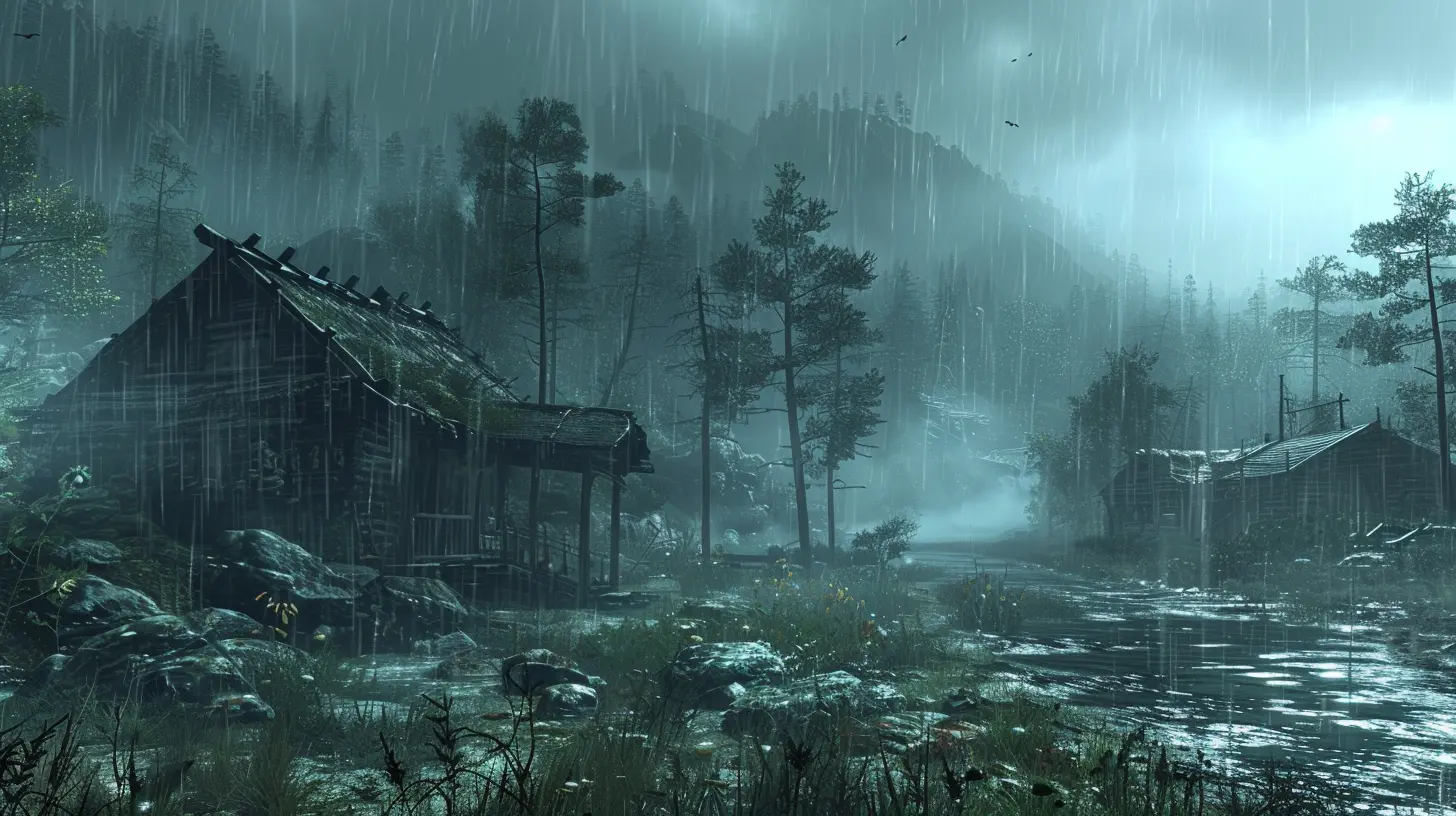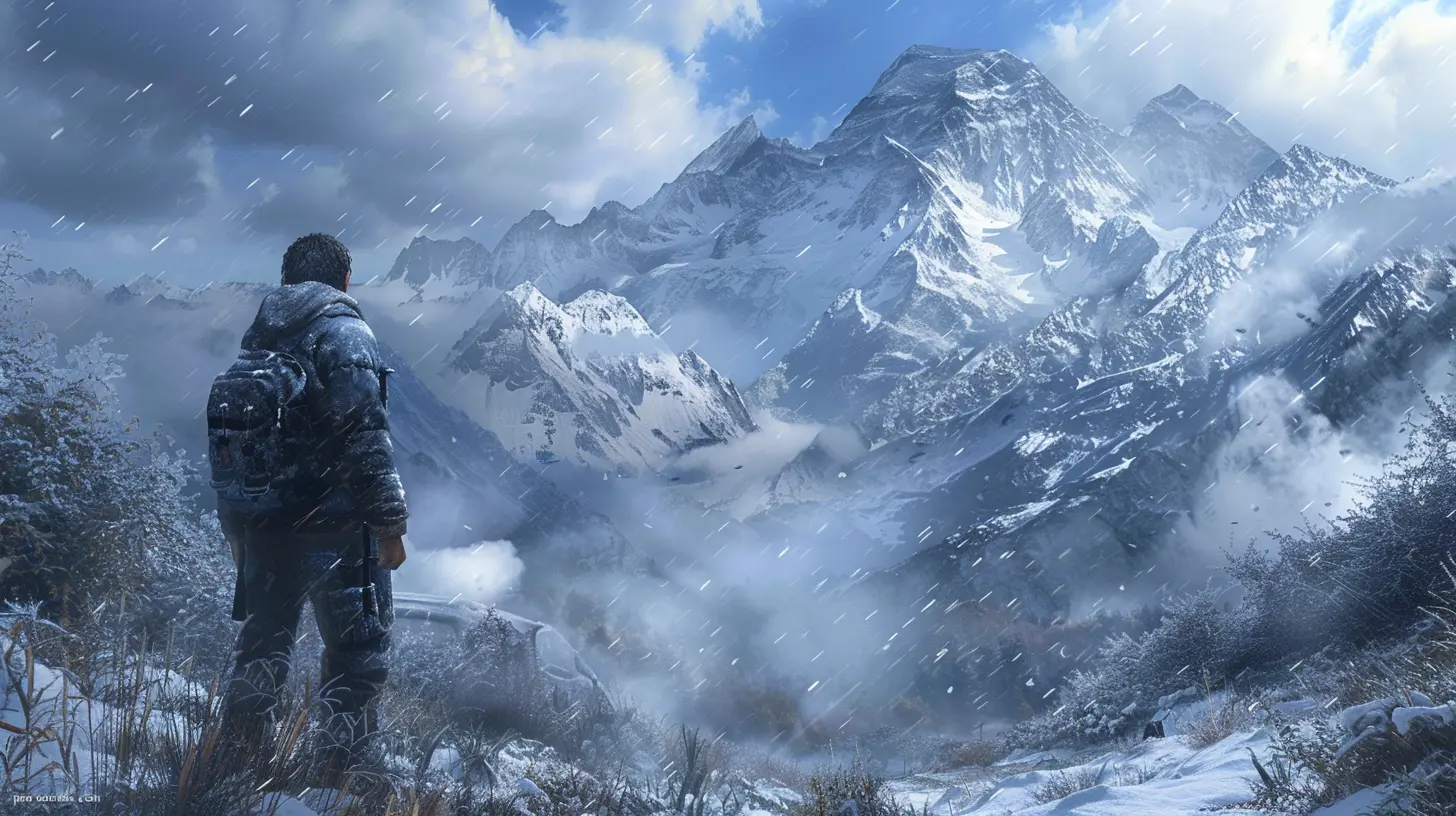The Role of Weather in Challenging Survival Games
23 September 2025
Survival games have always been about pushing players to their limits, throwing them into hostile environments where each decision could mean life or death. But what’s one element that can crank up the difficulty and immerse you even deeper into the experience? Weather. Yep, I’m talking about rainstorms, blizzards, scorching heat, and everything in between. Weather isn't just window dressing in survival games—it’s often a game-changer. So, let’s dive into how different weather conditions can shape your survival experience and test your mettle.

Why Weather Matters in Survival Games
Imagine this: You’re scavenging for food and supplies in a post-apocalyptic wasteland when a sudden snowstorm blows in. Your vision is next to zero, your character’s body temperature is plummeting, and your food rations are frozen solid. Sounds stressful, right? That’s the magic of weather in survival games. It adds layers of unpredictability and forces you to adapt to constantly changing environments.Weather isn’t just a cosmetic feature; it’s a tool that developers use to challenge players and create dynamic storytelling moments. Whether it’s the gentle patter of rain causing your campfire to sputter out or a full-blown hurricane ripping through your shelter, weather keeps you on your toes. It makes you feel like you're alive in the game world.

The Psychological Impact of Weather
Ever noticed how your mood shifts when the in-game weather changes? Games like The Long Dark or Rust capitalize on this. A sunny day gives you a false sense of security, while an incoming storm can send your anxiety spiraling. Weather mimics real-life conditions, tricking your brain into feeling the same emotions your character might be experiencing. Think of it as survival gaming’s version of method acting—you’re not just playing the game; you’re living it.The Role of Immersion
Dynamic weather systems make survival worlds feel real and alive. When you see clouds gathering on the horizon, you instinctively prepare, just like you would in real life. And isn’t that exactly what survival games are all about—bridging the gap between reality and fiction? Whether it’s navigating fog so thick you can’t see two steps ahead or listening to the ominous howling of the wind before a sandstorm, every moment is designed to pull you in.
Different Weather Types and Their Challenges
Let’s break it down—different kinds of weather create different obstacles. Here’s a rundown of some of the most common weather elements in survival games and how they mess with you.1. Rain
Rain is the OG of survival game weather. At first glance, it might seem harmless, but don’t let its gentle appearance fool you. Rain can drench you, leaving your character cold and vulnerable to hypothermia. It can also douse your campfire, making cooking or staying warm impossible. And, oh, let’s not forget how slippery the terrain gets—perfect for those “oops, I fell off a cliff” moments.In games like Don't Starve, prolonged rain can destroy your resources. Crops die, tools rust, and you end up in a soggy mess that screams "game over." And then there's the psychological toll. The constant sound of rain can feel oppressive, suffocating even, as if the game itself is telling you, "Give up already!"
2. Snow and Extreme Cold
If rain is annoying, snow is downright brutal. Extreme cold can kill you quicker than any enemy in survival games. Your character will burn calories like a marathon runner just trying to stay warm, so managing your food supply becomes critical. In titles like The Long Dark, the cold is an ever-present enemy—you’re not just worried about wolves; you’re worried about frostbite.Snow also makes navigation a nightmare. That cozy little cabin you saw in the distance? All of a sudden, you can't find it because the landscape is a whiteout. Oh, and forget about scavenging; most resources are buried under the snow.
3. Heatwaves and Drought
While snow and cold are all about too much of something, heatwaves are about too little. Too little water, too little shade, and too little stamina. Games set in desert environments, like Conan Exiles, show the harsh realities of surviving under a blazing sun. Dehydration sets in quickly, and the heat can sap your health before you’ve even taken two steps.In these conditions, resources like water become more precious than gold. It’s a constant scramble to find shelter or craft something to protect yourself from the sun. Heatwaves also limit how far you can travel—unless you’re into passing out in the middle of nowhere.
4. Storms and Hurricanes
Storms are the drama queens of weather systems, and boy, do they deliver. Games like Subnautica use storms to create sheer chaos, tossing your character and their resources around like a ragdoll. Thunderstorms can disrupt your vision and hearing, making it nearly impossible to spot danger until it’s too late.Just when you think you’ve got your survival strategy locked in, a hurricane can roll through and destroy everything you’ve built. Your carefully crafted base? Gone. Your stash of supplies? Swept away like they meant nothing. It’s equal parts devastating and exhilarating.
5. Fog
Fog is a sneaky little devil. It’s not as overtly dangerous as a blizzard or a heatwave, but it’s just as challenging. In foggy conditions, visibility drops to near zero, making it easy to get lost or walk right into an ambush. Imagine hunting for food in The Forest, only to find yourself face-to-face with something that’s hunting you. Yeah, good luck with that.Fog also amplifies the fear factor. When you can’t see what’s around you, your imagination fills in the blanks. Every shadow becomes a potential threat, and every sound makes you jump out of your seat.

Adaptive Survival: How Players Respond to Weather
So, how do players deal with these meteorological nightmares? The great thing about survival games is they force you to think on your feet. Here are some strategies players use to outsmart the weather:- Stockpiling Resources: When you know bad weather is coming, you stock up on essentials like food, water, and firewood. It’s like prepping for a snowstorm in real life—better safe than sorry.
- Crafting Weather-Resistant Gear: Whether it’s a raincoat, thermal clothing, or sunscreen, having the right gear can make or break your survival chances.
- Building Shelters: A sturdy shelter is your best friend in bad weather. Some games even let you upgrade your shelter to withstand specific weather types, adding a fun layer of strategy.
- Adapting Travel Plans: If a storm’s rolling in, it might be smarter to hunker down and wait it out instead of risking your life.
The Future of Weather in Survival Games
As gaming technology evolves, so too does the potential for more realistic and challenging weather systems. Imagine games where weather patterns are influenced by your actions—cut down too many trees, and you trigger environmental changes that make weather more extreme. Or picture AI-driven weather that adapts to your playstyle, keeping you guessing no matter how experienced you are.We’re already seeing glimpses of this in games like Red Dead Redemption 2, where weather dynamically impacts the world and characters. It’s only a matter of time before survival games take it to the next level.
Conclusion: Weather Is the Ultimate Antagonist
In survival games, weather isn’t just a backdrop—it’s an active participant. It challenges you, frustrates you, and forces you to adapt in ways you never expected. Whether you’re trudging through waist-deep snow or sweating bullets in a desert, weather is the ultimate test of your survival instincts.So, the next time a thunderstorm wrecks your shelter or a blizzard forces you to eat your last granola bar, don’t get mad. Take it as a sign that the game is doing its job. After all, survival is supposed to be hard. And honestly, would you have it any other way?
all images in this post were generated using AI tools
Category:
Survival GamesAuthor:

Tina Fisher
Discussion
rate this article
1 comments
Levi Fletcher
Weather in survival games adds realism and complexity, influencing gameplay dynamics such as resource management and strategy. It challenges players to adapt, enhancing immersion and increasing the overall tension and excitement.
September 23, 2025 at 4:30 AM

Tina Fisher
Thank you for your insightful comment! I completely agree that weather significantly impacts gameplay, pushing players to adapt their strategies and enhancing the immersive experience in survival games.


